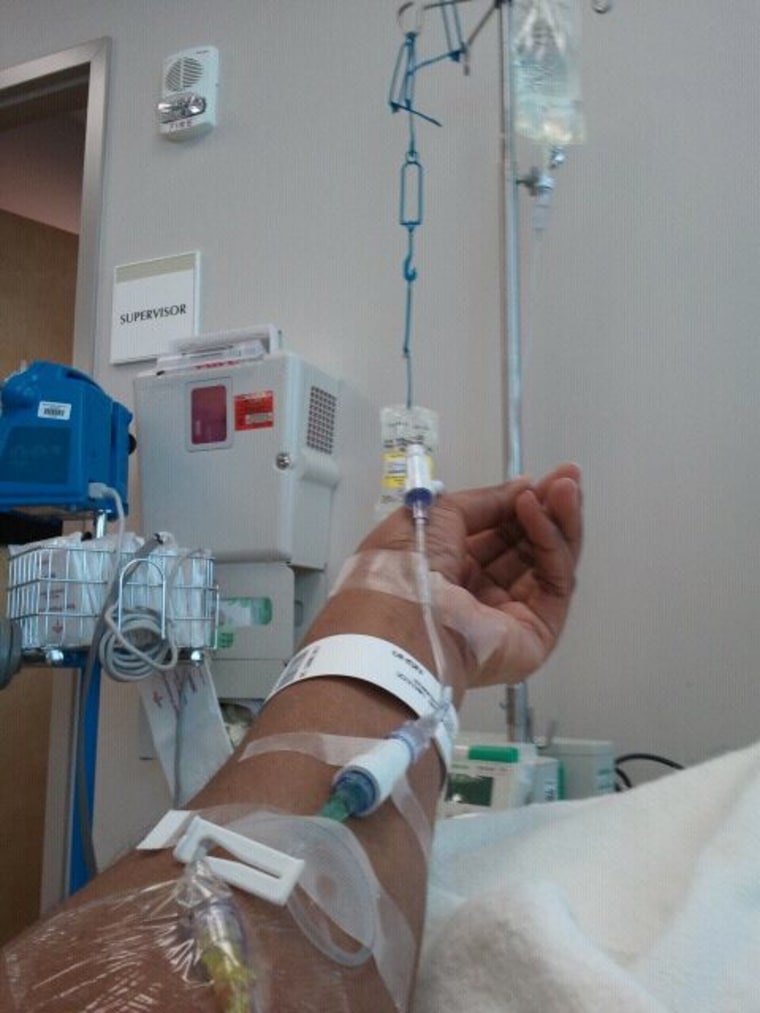Despite years of warnings, federal fines and embarrassing statistics, America’s hospitals are still teeming with infectious bacteria, including drug-resistant superbugs, according to two reports released Thursday.
One-third of hospitals rated by Consumer Reports got low scores on how well they prevent one of the worst infections, Clostridium difficile.
Many are flagship teaching hospitals, like those at Johns Hopkins University or Harvard Medical School, and the list includes the prestigious Cleveland Clinic.
The Centers for Disease Control and Prevention laid the responsibility squarely on doctors, nurses and hospital administrators.
“Doctors are the key to stamping out superbugs. Antibiotic resistance threatens to return us to a time when a simple infection could kill,” CDC Director Dr. Tom Frieden told reporters.
“On any given day, about one in 25 hospitalized patients has at least one healthcare-associated infection that they didn’t come in with.”
“This is a very concerning report."
These infections are not mysterious," he said. "They’re caused by unwashed hands, rooms that are not cleaned thoroughly, overuse and misuse of antibiotics, a lack of careful hygiene in inserting catheters and other tubes, and slow detection of outbreaks.
“This is a very concerning report,” Frieden said. “There are clear simple steps. The hard part is to do them each and every time.”

And Consumer Reports said the lower-rated hospitals included 24 large, reputable teaching hospitals. “It’s worrisome that so many hospitals, including academic centers, are exposing their patients to these deadly infections,” Doris Peter, director of the Consumer Reports Health Ratings Center, said in a statement.
“Teaching hospitals that are training our next generation of doctors should be models for patient safety and best practices; however, far too many of these hospitals fare poorly when it comes to preventing C. difficile, which we see as a red flag for poor patient safety.”
Dr. Peter Pronovost, director of the Armstrong Institute for Patient Safety and Quality at Johns Hopkins, said his hospital was working on the problems.
“No hospital is immune from this problem and we all have work to do,” he said.
Massachusetts General Hospital, part of the Harvard Medical School system, said it also had infection control programs.
"Roughly half of all the C. difficile patients at MGH come to us with their infection present at the time of admission," said the hospital's infection control chief Dr. David Hooper. "Our infection rate was similar to what would have been expected given the complexity of our patient population."
Related: Almost Every American Gets a Wrong Diagnosis
“We are committed to providing the highest quality and safest care to our patients and believe transparency is essential. We continue to focus on opportunities to improve for all who entrust us with their care,” the Cleveland Clinic said in a statement. Other hospitals named by Consumer Reports did not immediately respond to requests for comment.
The Institute of Medicine sounded the loudest alarm in 1999, with a report that estimated anywhere between 44,000 and 98,000 people a year die from medical errors, many of them from hospital-acquired infections.
The Health and Human Services Department, working through CDC and the Centers for Medicare and Medicaid Services, has worked to try to get on top of the numbers and then get them down, using decreased payments to punish hospitals that don’t hit specific targets.
But it’s been a tough battle, and the latest numbers don’t show a lot of progress. The CDC report found a 50 percent decrease in infections called central line associated bloodstream infections from 2008 to 2014. These are infections caused when medical staff insert a narrow tube for long-term infusions of painkillers or other medications, often to the area around the heart.
The report found an 11 percent drop in catheter-associated urinary tract infections from 2009 to 2013, and an 8 percent drop of C. difficile infections between 2011 and 2014. Still, more than 400,000 people get C. difficile every year. It causes severe diarrhea and hits the sickest patients who take antibiotics for weeks or months on end.
“During 2011 an estimated 722,000 healthcare-associated infections occurred in U.S acute care hospitals, and approximately 75,000 patients with healthcare-associated infections died during hospitalization,” the CDC team wrote in the report released Thursday.
“More than half of these healthcare-associated infections include C. difficile infections, urinary tract infections, bloodstream infections, or surgical site infections.” Worse, many involve germs that have become resistant to antibiotics.
“It’s worrisome that so many hospitals, including academic centers, are exposing their patients to these deadly infections."
“In the United States, approximately 2 million persons become ill every year with antibiotic-resistant infections, and approximately 23,000 die,” the CDC team, led by Dr. Clifford McDonald, said.
Frieden said hospital administrators must commit to tracking infection rates openly and then tackling them. “I think there are some low-tech and high-tech solutions here,” he said. “Some are as simple as handwashing and improved environmental cleaning in hospitals,” he added.
“But some will require new tools.” Those include new diagnostic tests that tell doctors quickly if someone has an antibiotic-resistant infection so that they can get appropriate care right away, and be isolated so the infection does not spread.
